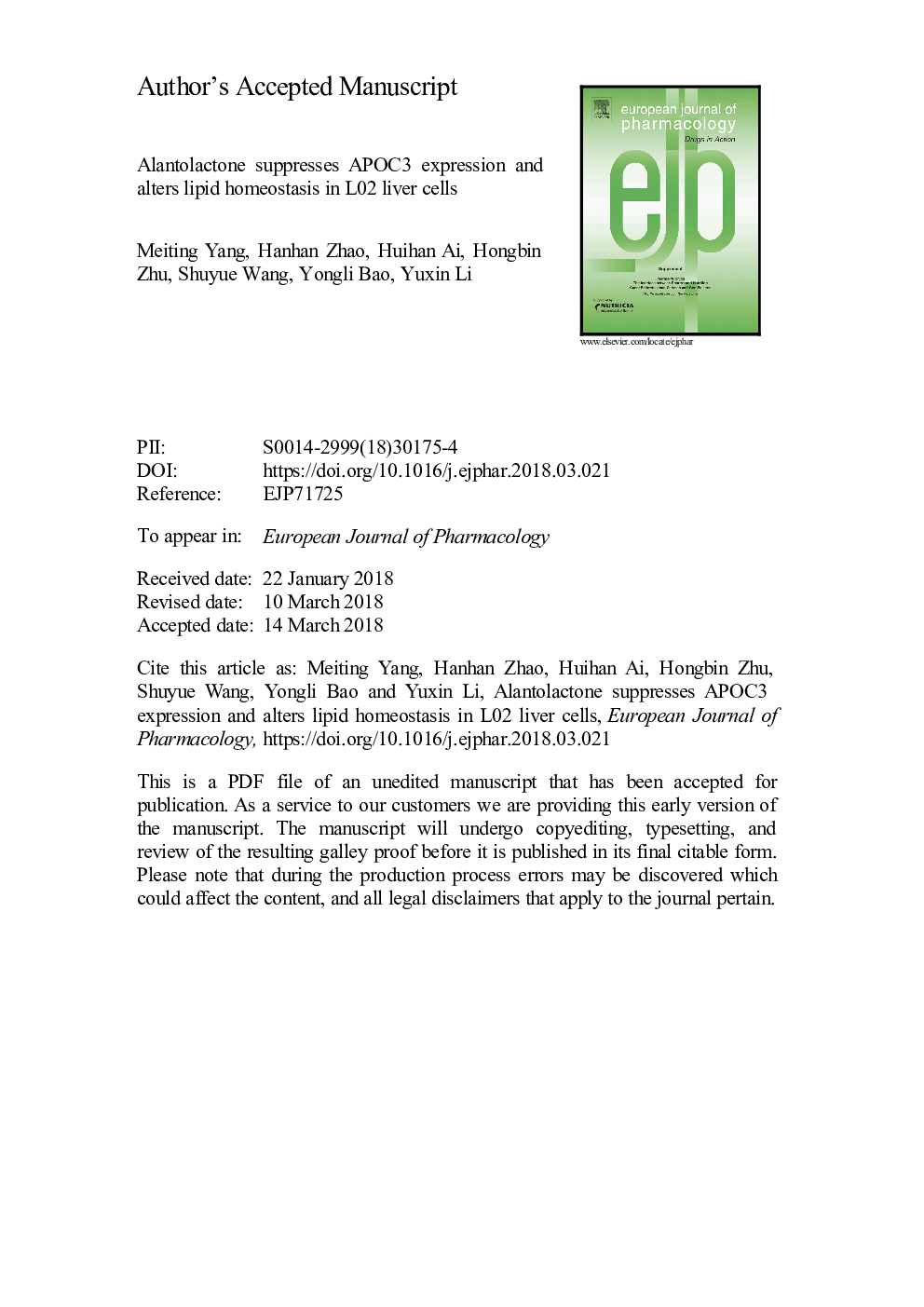| Article ID | Journal | Published Year | Pages | File Type |
|---|---|---|---|---|
| 8529067 | European Journal of Pharmacology | 2018 | 25 Pages |
Abstract
A high level of APOC3 expression is an independent risk factor for some lipid metabolism-related diseases, such as cardiovascular disease (CVD), nonalcoholic fatty liver disease (NAFLD) and atherosclerosis (AS). This suggests that down-regulating APOC3 expression is a potential way of regulating lipid levels. In this study, we used luciferase reporter screening to identify a natural compound, alantolactone (ALA), that can inhibit the promoter activity of APOC3. ALA decreased APOC3 expression at both mRNA and protein levels. Then we pretreated L02 liver cells with oxLDL to investigate the function of ALA in lipid homeostasis. Intriguingly, ALA attenuated oxLDL-induced foam cell formation by reducing total cholesterol (TC) and triglyceride (TG) contents. Furthermore, these results could be reversed by overexpressing APOC3 protein. ALA inhibited tyrosine phosphorylation (Tyr705pho) of STAT3 to down-regulate APOC3 expression. Intriguingly, overexpression of a wild-type STAT3 or a constitutively active form of STAT3 (STAT3-C) up-regulated APOC3 expression and partly reversed the effect of ALA in oxLDL-induced L02 cells. Overexpression of wild-type STAT3 also increased TC but not TG contents in L02 cells. However, overexpression of STAT3-C significantly increased TC and TG contents, and the effect of ALA was partly attenuated by STAT3-C, although this was not statistically significant. These results suggest that ALA attenuates lipid accumulation through down-regulation of APOC3 expression, at least in part by inhibiting STAT3 signaling.
Related Topics
Life Sciences
Neuroscience
Cellular and Molecular Neuroscience
Authors
Meiting Yang, Hanhan Zhao, Huihan Ai, Hongbin Zhu, Shuyue Wang, Yongli Bao, Yuxin Li,
